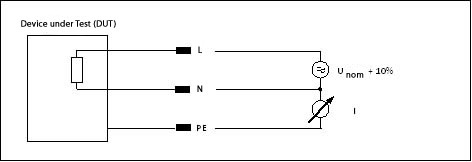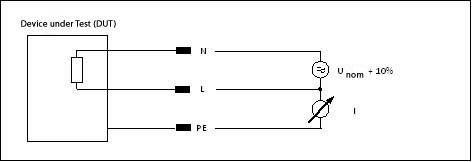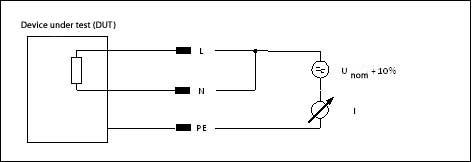Leakage current measurement
Basics
Leakage current measurement is performed as part of the safety test of an electrical device. The currents flowing through the protective conductor or metallic parts of the earth are measured. Alternating currents can occur such as the through capacity of lines, coils etc. It can even flow with a proper insulated earth. If these flows are too high, it becomes a hazard.
Procedure of leakage current measurement
Leakage current measurement is conducted under operating and fault conditions. By definition, the operating voltage is 110%. The current is measured by a measuring device that simulates the resistance of the human body (2kΩ). The measurement is carried out in three modes of operation of a single phase device under test, with the exception of medical devices, according to the following methods:
method A1:

leakage current measurement between neutral conductor and PE
method A2:

leakage current measurement between phase and PE
method B:

leakage current measurement between phase and neutral conductor and PE
If a three-phase system is being tested, the leakage current is measured from the star point against PE. Here, an interruption of the individual phases is provided. The limits are defined according to the standards. Compact tester and leakage current measuring devices, along with high voltage tests, protective conductor tests and leakage tests are found here.
« Back
